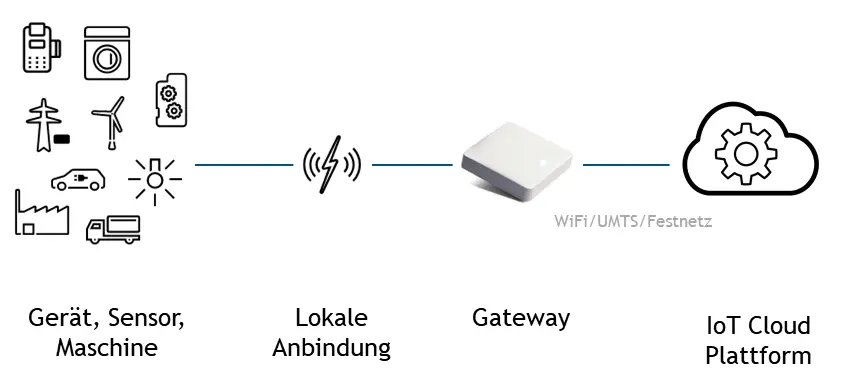Description of technology vendors

Digital technologies play a central role in smart cities. This section describes some of these technologies in more detail.
Low Power Wide Area Network (LPWAN)
Instead of using conventional transmission protocols such as WLAN, 3G, 4G, 5G or similar, IoT is based on Low Power Wide Area Network (LPWAN), which is characterized by good building penetration, long range and low energy consumption. In Switzerland, the best known examples are LoRaWAN and Sigfox, although only LoRaWAN is offered nationwide by the mobile phone provider Swisscom.
Sensors
Sensors can detect various physical or chemical events in their environment. These data are transmitted to a gateway at fixed intervals, usually via wireless networks. Since the sensors have a very low energy consumption by transmitting over LPWAN, they can send and receive data for several years with the same built-in battery.
Gateways
IoT gateways can collect data from a variety of sensors and transmit it to a platform. They provide an interface between the sensor and the platform. There are various use cases for IoT Gateways:
Data Converter
Different sensors also use different communication protocols (e.g. fieldbus, M-Bus or Modbus), which can then be converted into a suitable, uniform format in the IoT Gateway.
Collection point for sensor data
IoT gateways bundle the data from sensors and then transmit it to the platform via radio link (WLAN, 2/3/4/5G etc.) or fixed network connection. In this way, additional costs such as for SIM cards etc. can be kept low, as not every sensor has to be equipped with a SIM card. Thus, sensors can be set up independent of location (without power & internet connection), which forward their signal (e.g. via LoRaWAN) to a central gateway.
Filter
Sensors sometimes send data that may be of no interest to the operator. This could be data from a level sensor, for example: as long as the level does not change, the platform does not need new data. The Iot-Gateway can serve as a filter here by detecting changes and only continuing to send data to the platform after a pre-programmed threshold value has been exceeded or fallen below. This helps to save transmission costs and also keeps the transmission frequency free for more important data.
IoT platforms
On IoT platforms the data of a multitude of sensors are collected and presented in a user-friendly way. In most cases, this is done using software that provides the user with an overview of all data (number of free parking spaces, consumption of street lighting, fill levels of waste containers, etc.). Examples are the platforms of Akenza AG, Elektron AG etc.
IoT platforms can be used for urban services to monitor urban infrastructure. In addition, the platform can also be made accessible to the public so that they are informed about free parking spaces, particulate matter pollution, etc. A good example is the platform of Bad Hersfeld (DE) of the operator [ui!]: https://badhersfeld.urbanpulse.de/#!/tiles/